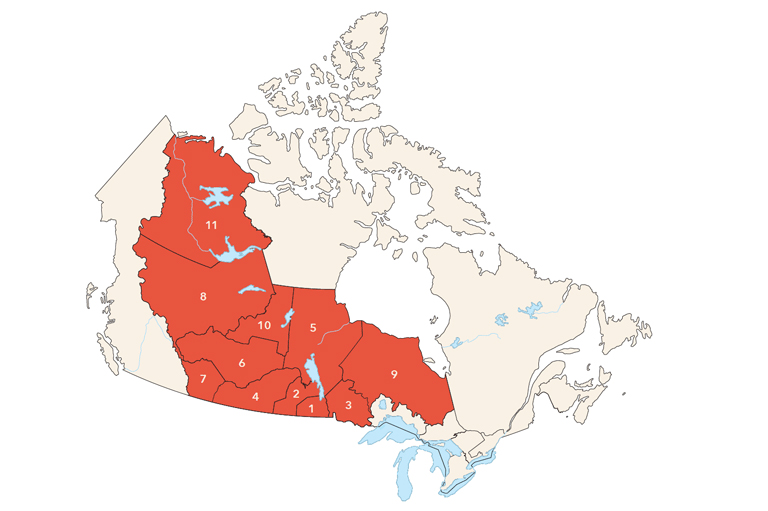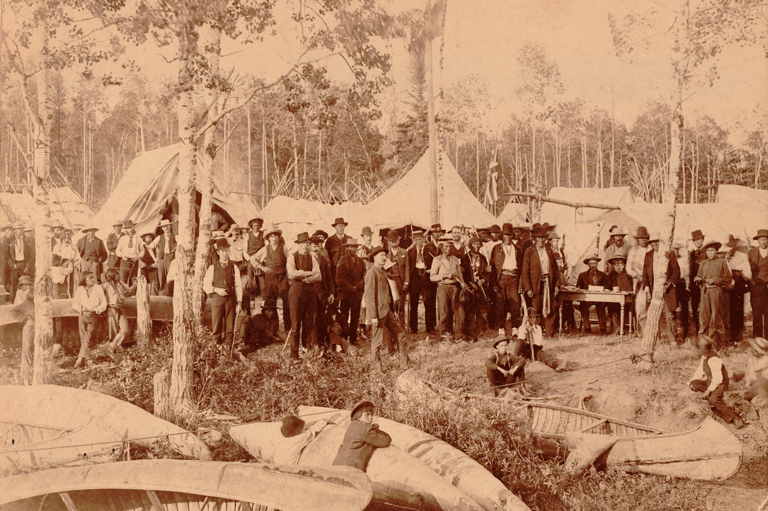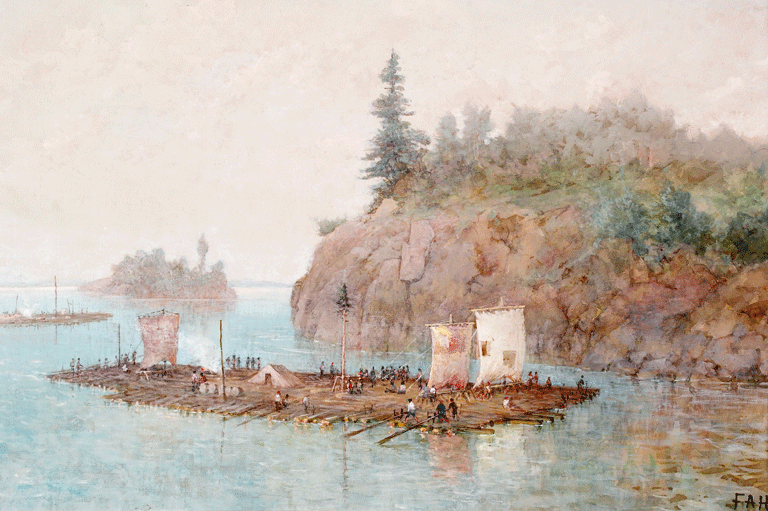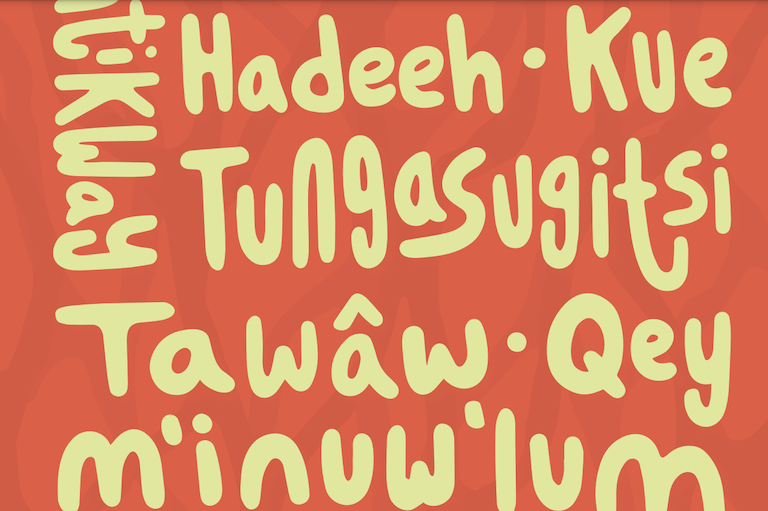Relationships, Respect and Reconciliation
Grade Levels: 3/4, 5/6, 7/8
Subject Area: Social Studies, History, Geography
This lesson is based on the comic “Power of the People” in the We Are All Treaty People issue of Kayak: Canada’s History Magazine for Kids.
Lesson Overview
In this lesson students explore James Bay and Northern Quebec Agreement and the resulting affects on Cree and Inuit. They consider the affects of the agreements by exploring media sources reporting from the 1980s and consolidate their learning by writing a Letter to the Editor.
Time Required
Six to eight class periods
Historical Thinking Concept(s)
- Establish historical significance
- Analyze cause and consequence
- Take historical perspectives
- Understand the ethical dimension of historical interpretations.
Background Information
In the 1960s, the Quebec Government began developing potential hydroelectric resources in the North. In 1971, without consultation of the Cree and Inuit people living across the territories, the government announced that it had created the James Bay Development Corporation and would begin developing a hydroelectric project on James Bay. The Cree and Inuit opposed the project and actively advocated for their rights to their traditional ways of life. The matter remained before the courts until an agreement was negotiated and signed in November 1975. Although the James Bay and Northern Quebec Agreement (JBNQA) was an important step in recognizing that Indigenous people have rights over their land, there have been many consequences of the agreement including 11 500 km2 of flooding, relocation, caribou deaths, and mercury poisoning.
Learning Outcomes
Students will:
- Consider the affects of flooding on their home communities.
- Explore the historical and contemporary significance of the James Bay and Northern Quebec Agreement (JBNQA).
- Assess the positive and negative consequences of the JBNQA for the Cree and Inuit.
The Lesson Activity
Activating: How will students be prepared for learning?
2 class periods
- Display map of Quebec. Ask students to locate and indicate James Bay.
- Invite students to point out other physical and human-made features such as rivers, lakes, cities/towns, nearby provinces and territories.
- Locate and indicate Nunavik, the northern part of Quebec, home to Inuit. [If the map does not indicate Nunavik, write the place name on a slip of paper and affix it to the map.]
- Explain that over the next several lessons that the class will be exploring Nunavik, the James Bay and Northern Quebec Agreement (JBNQA), and the ways in which it changed the lives of the Cree and Inuit in Quebec.
- Hand a copy of BLM #10.1 My Community Map – one per student.
- Read over as a group and instruct students to complete the activity.
- Once finished, arrange a sharing session for students to view each other’s maps.
- Using Google Earth/Google Maps, project a map of the James Bay region.
- Inform students that when the James Bay hydroelectric project was developed, 11 500 km2 of land was flooded. Explain that this meant some communities had to be relocated, and that many traditional hunting grounds were consequently underwater.
- Using Google Earth/Google Maps, locate your school. Use the Google map tool to show what a flooded area of 11 500 km2 would look like in relation to their school.
- Draw students’ attention back to their maps. Encourage them to think about those features they consider important. Ask: What would you lose if our land was flooded?
- Divide the class into small groups or pairs. Ask them to reflect on the following questions:
- What’s the biggest impact of a flood like this on a community?
- On the environment, including animals?
- What would be lost if your community was flooded?
- How would it feel to have your land flooded?
- Why do you think the Cree and Inuit agreed to this despite the consequences?
- How would it feel to have to be relocated?
- Do you think any of the Cree and Inuit wished they had not agreed?
- Do you think the Cree and Inuit should have had to give up so much to gain the benefits of the agreement?
Acquiring: What strategies facilitate learning for groups and individuals?
3 – 4 class periods
- Distribute copies of the We Are All Treaty People issue of Kayak: Canada’s History Magazine for Kids to pairs of students.
- Instruct the students to read the comic individually, and then discuss what they noticed/learned/are thinking about with their partner.
- After the students have discussed the comic with their partner, lead a class discussion about what they noticed/learned/are thinking about the comic.
- Record students’ reflections on chart paper.
- Assemble students in the same pairs. Hand out sticky notes.
- Instruct each pair to re-read the comic and choose four of the following questions:
- Why do you think the animals are featured first in this comic?
- On page 2, the Premier of Quebec, Robert Bourassa, says that the “development of James Bay is key to the economic and social progress of Quebec.” What do you think he means by this and who’s social and economic progress is he referring to?
- On the bottom of page 2, what do the expressions of Chief Billy Diamond and the others at the table tell you about how they feel?
- Why do you think the government of Quebec never consulted the Indigenous people?
- What did Justice Robert Malouf rule? Do you agree with this decision?
- When was the James Bay and Northern Quebec Agreement signed? What did it say?
- Do you think this agreement was historically significant? Why or why not?
- Tell students to write the question number and their response on one sticky note.
- When completed, post sticky notes.
- Invite students to share their responses.
- Encourage questions and discussion.
Applying: How will students demonstrate their understanding?
1– 2 class periods
- Reassemble class into pairs.
- Cut and distribute BLM # 10.2 Critically Thinking About the James Bay Agreement – Plus and Minus Cards, one set per pair.
- Distribute BLM # 10.3 Critically Thinking About the James Bay Agreement – Activity Sheet, one per pair
- Explain that the James Bay and Northern Quebec Agreement had far-reaching affects on the Cree and Inuit of the area. Explain that the following two videos explore these.
- Read over the Plus and Minus cards. Explain that as the videos play, they should place the cards on the side of the column, plus or minus (good affects or negatives affects) that they feel the JBNQA resulted in.
- Access and show the following CBC videos:
- “James Bay Cree experience Dramatic Change” (1985) (4:33)
- “Traditions survive at James Bay” (1989) (3:14)
- Instruct student to place the plus and minus cards in the two columns.
- Guide and assist as necessary.
- Once the pairs have completed the exercise, bring them together for an all-class discussion.
- As a final activity, instruct each student to choose an issue related to the James Bay and Northern Quebec Agreement (relocation/resettlement, caribou deaths in Nunavik, mercury poisoning in fish, subsistence on government etc.) and write a “Letter to the Editor” citing their concerns.
- Design a rubric for the activity that helps students centre their letter on relationships, respect and reconciliation.
Materials/Resources
- Copy/copies of the We Are All Treaty People issue of Kayak: Canada’s History Magazine for Kids.
- Printed copies of BLM #10.1 - one per student
- Printed copies of BLM#10.2 and BLM#10.3 – one per pair
- Access to Internet and Google Earth/Google Maps
- Google Maps/James Bay
- Chart paper
- Sticky notes
- “James Bay Cree experience Dramatic Change” (1985) (4:33)
- “Traditions survive at James Bay” (1989) (3:14)
Extension Activity
Compare and contrast the JBNQA with the Numbered Treaties and present student findings to the class, or another class in the school.
Lesson Plans
Themes associated with this article
Advertisement

Encouraging a deeper knowledge of history and Indigenous Peoples in Canada.
The Government of Canada creates opportunities to explore and share Canadian history.

The Winnipeg Foundation — supporting our shared truth and reconciliation journey.

We contribute to the well-being of the communities we serve through grants, scholarships, sponsorships, fundraising, volunteering and collaborative relationships with community partners.













